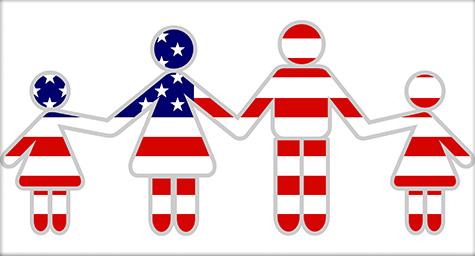Shifting Consumer Sentiment: A Deep Dive into American Economic Concerns
A recent analysis from The Wall Street Journal reveals a troubling trend in the economic attitudes of American consumers. As inflation continues to exert pressure and uncertainty looms over the economy, consumer confidence is diminishing. This decline raises alarms about potential repercussions for spending patterns and overall economic growth. This article examines the underlying factors contributing to this negative sentiment and discusses its implications for businesses and policymakers as we navigate these turbulent economic times.
Rising Anxiety Over Inflation and Purchasing Power
With persistent inflation, many Americans are increasingly expressing their worries regarding the economy’s impact on their financial capabilities. Recent surveys show that a considerable portion of households are modifying their budgets due to escalating prices, with 83% of participants acknowledging they feel financially strained. Key concerns among consumers include:
- Grocery Costs: Families are compelled to seek more affordable options or cut back on food consumption due to soaring grocery prices.
- Fuel Expenses: High gasoline costs are putting pressure on household budgets, prompting many commuters to rethink their transportation choices.
- Affordability of Housing: Increasing rents and home prices are making it difficult for prospective buyers while straining current renters.
This shift in consumer sentiment could potentially lead to a slowdown in economic growth if spending continues its downward trajectory. Many households express concern about their ability to save for future needs, as highlighted by recent findings that reveal significant trends among consumers:
| Main Concerns | % of Consumers Affected |
|---|---|
| Rising Cost of Living | 70% |
| Diminishing Savings | 58% |
This data illustrates an increasing sense of anxiety among American shoppers, influencing not only immediate purchasing decisions but also shaping long-term financial perspectives.
Economic Anxiety’s Influence on Consumer Habits and Retail Dynamics
The prevailing climate of economic uncertainty has profoundly altered consumer behaviors across the United States. As families contend with rising costs coupled with stagnant wages, there is a marked shift towards more frugal purchasing habits. Research indicates that over 65%
The ramifications of this economic anxiety extend beyond immediate buying patterns; shifts in priorities among consumers manifest through various trends: <
The cautious approach adopted by American shoppers necessitates that businesses recalibrate their strategies effectively engage these discerning customers. Additionally, The latest insights from The Wall Street Journal underscore an alarming trend within American society where growing unease regarding financial stability prevails amongst citizens . With inflation rates climbing , fluctuating employment figures ,and increasing fiscal instability ,the survey results indicate waning confidence levels .As families brace themselves against possible future challenges ahead ,it becomes imperative both policymakers & business leaders heed these warnings closely . While uncertainties loom large over our collective outlooks moving forward ; understanding how consumers perceive situations will prove vital when navigating through evolving landscapes within America’s economy . Continuous monitoring will remain crucial if we hope anticipate shifts occurring amongst buyer behaviors whilst crafting effective responses aimed safeguarding overall stability .
>
<
>Changes in Consumer Behavior<< / th >>
<< th >> % Respondents<< / th >>
<< / tr >>
<< / thead >>
<< tbody >>
<< tr >>
<< td >> Reducing discretionary expenses<< / td >>
<< td >> 65%<< / td >
<<< tr >
<<< td > Switching to discount stores<<< / td >
<<< td > 50%<<< / td >
<<< tr >
<<< td > Focusing on health & wellness products<<< / td >
<<< dt >> 40%
<<< tbody >< table >
Adapting Business Strategies Amidst Cautious Consumer Behavior
One effective strategy involves highlighting value propositions clearly while ensuring affordability remains at the forefront.
By communicating product benefits without compromising pricing integrity—through tiered pricing structures or loyalty discounts—companies can address customer apprehensions directly.
p >
establishing strong connections through transparency is essential during these times.
Brands can cultivate trust by sharing authentic narratives about values or social responsibility commitments.
Personalized marketing efforts should be prioritized alongside targeted communications aimed at reinforcing brand-consumer relationships.
p >< li >< strong > Leveraging social media platforms for real-time feedback< strong > li >< li >< strong > Enhancing customer service capabilities< strong > li >< li >< strong > Investing heavily into digital transformation initiatives< strong > li >< li >< strong > Conducting ongoing market research efforts< strong > li > ul >
Conclusion: Navigating Uncertain Economic Waters Ahead
